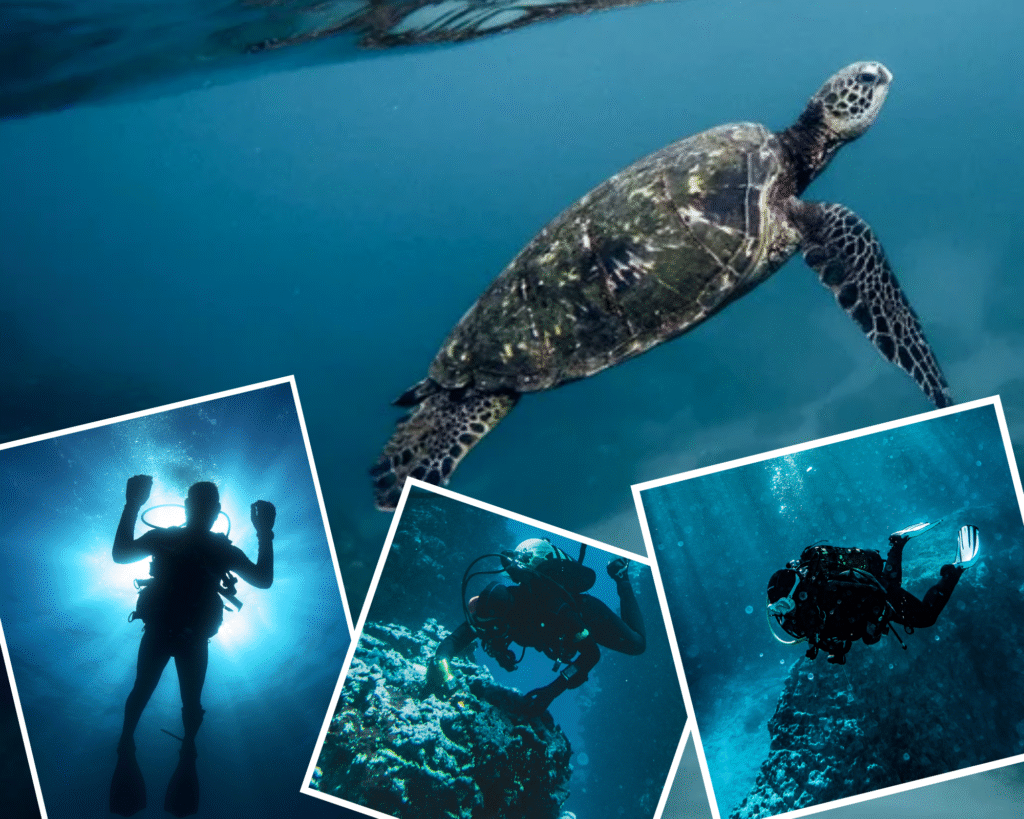Introduction to Solo Diving
Solo diving empowers you to explore the ocean’s wonders at your own pace. As PADI-certified divers, you gain confidence through structured training and dive site directories. In this guide, you’ll find solo diving safety tips, marine life insights, and gear recommendations. Whether you're planning a trip to the Great Barrier Reef in Australia or elsewhere, this article helps you plan your summer dive trips and book diving packages.
Why Choose Solo Diving?
Solo diving allows flexibility, focus, and a deeper connection with marine life. You decide when and where to dive, how long to stay underwater, and which creatures to observe. It encourages mindfulness and personal growth—every dive becomes your own story.
Safety First: Solo Diving Safety Tips
Diving alone demands planning and preparation:
- Get certified: PADI certification ensures you have the necessary skills.
- Plan your dive: Know currents, depths, and emergency exits using dive site directories.
- Use reliable gear: Redundant air supply and safety equipment are essential.
- Check-in regularly: Leave your dive plan with a buddy onshore.
- Stay within limits: Stick to depths and time limits you’re comfortable with.
- Watch marine life respectfully: Observe but don’t disturb sea creatures.
These solo diving safety tips protect you and marine life while exploring underwater exploration.

Best Dive Sites for Solo Travelers
When looking for destinations, prioritize sites known for accessibility and support services.
1. Great Barrier Reef, Australia
This world-class destination features diverse coral reefs and abundant marine life. Dive operators offer solo diving support and comprehensive programs.
– Common sightings: reef sharks, turtles, colorful fish.
You can easily book diving packages near Port Douglas or Cairns, ensuring both adventure and safety.
2. Ningaloo Reef, Western Australia
Known for gentle currents and seasonal whale shark visits, Ningaloo is ideal for independent divers.
– Marine life highlights: whale sharks, manta rays, turtles.
3. Blue Hole, Dahab, Egypt
A deep blue sinkhole with clear waters, great for experienced solo divers. Dive site directories provide detailed maps of depth and underwater scenery.
4. Maldives Atolls
Calm waters and overwater dive centers make the Maldives a top choice. Spot manta rays and reef sharks in crystal-clear conditions.
5. Sipadan, Malaysia
With steep walls and healthy coral, Sipadan is a hidden gem. Permits control numbers, ensuring less crowded dives—a great match for solo travelers.
Preparing for Your Dive
Training & Certification
Obtain a PADI advanced or specialty certification for solo diving. Course modules cover dive planning, gas management, and stress handling.
Equipment Checklist
- Mask, fins, wetsuit
- Primary and backup dive computer
- Backup air: pony bottle or redundant cylinder
- Surface signaling devices: DSMB, whistle
- Dive slate for notes or communication
- Underwater light for low-light areas
Dive Planning
Research currents, weather, and visibility for your best dive sites. Dive site directories are invaluable.
Emergency Preparedness
Have surface interval plans and evacuation routes. Learn CPR and first aid. File your dive plan with local dive shops or a dive buddy.
What to Expect Underwater
Marine Life Encounters
- Colorful coral reefs attract schools of fish.
- Sharks and rays glide gracefully in clear water.
- Turtles rest on sandbanks or swim alongside you.
- Macro life reveals hidden beauties: nudibranchs, shrimps, tiny crabs.
These marine life encounters are what make each solo dive magical.
Underwater Photography
Solo divers have freedom to capture shots at their own pace. Set up cameras carefully and stay safe.
Mental and Physical Benefits
Diving reduces stress, improves breathing control, and strengthens muscles. Being alone underwater offers quiet reflection and mindfulness.
Booking and Packages
Most dive centers in reef destinations offer:
- Guided or unguided trips for solo divers
- Equipment rental and redundant air systems
- Transfer and accommodation packages
- Safety briefings tailored to solo divers
You can book diving packages online or on-site. Always verify PADI certification and insurance requirements before traveling.
Seasonal Planning
Summer Dive Trips
Summer weather offers calm seas and warm water temperatures.
- Australia’s summer (December–February) is perfect for tropical reefs.
- In the Maldives, April–November brings clearer skies and calmer seas.
Always check seasonal variations and marine life patterns before booking.
Dive Site Information Resources
- Use PADI directories for dive maps, conditions, and operator listings.
- Join online forums and local clubs to get first hand advice.
- Invest in regional dive guides that highlight best dive sites for solo travelers.
PADI and You
PADI offers solo diving resources, safety checklists, and continuing education. Many dive shops affiliated with PADI support solo divers and ensure accessible emergency response.
Testimonial: My Solo Dive at the Great Barrier Reef
“I traveled alone to Cairns and booked a PADI-backed solo diving package. I felt safe descending into the reef. I saw turtles and manta rays up close. Diving by myself allowed me to photograph freely and stay as long as I liked. Solo diving safety tips gave me confidence. It was the best dive site experience and a true underwater exploration.”
Conclusion
Solo diving offers a unique mix of freedom, adventure, and personal growth. From PADI certification to choosing the best dive sites for solo travelers, this guide gives you all you need. Remember solo diving safety tips, learn about marine life, and plan your summer dive trips. Use dive site directories and book diving packages to make your journey to the Great Barrier Reef or other reefs stress-free. Dive into underwater exploration and create your own solo adventure story!







